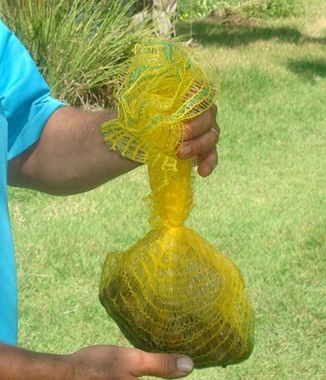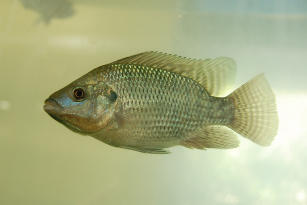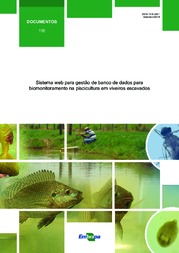A simple and cheap method monitors water quality in tilapia nurseries
A simple and cheap method monitors water quality in tilapia nurseries
Scientists use benthos, invertebrate organisms that live at the bottom of bodies of water, as water quality indicators
Embrapa researchers have used a simple, low cost alternative to monitor the water quality in tilapia nurseries. They used collectors with an artificial substrate to colonise fish tanks with benthic macro-invertebrates, small living beings that serve as food for the fish and that are water quality indicators. The research was conducted in four farms in Conchal, Mogi Mirim and Itapira, in the lower Mogiana region in São Paulo state.
As nurseries do not have substrates that are similar to natural waterbodies, the use of artificial ones helps with the standardisation of the sample area and the initial colonisation time, thus reducing variability, processing time, operational costs, and providing higher data precision, in addition to being easy to do and manage. As they are made of low-cost materials, they are less dependent on the conditions of each fish tank or fish farmer, allowing comparison.
According to the Embrapa Environment researcher Mariana Silveira Moura e Silva, the biomonitoring is based on the measurement and interpretation of the biotic integrity of the environment through changes in the abundance, diversity and composition of the groups of indicator organisms that depend on specific conditions for their survival.
According to FAO, in 2019, cultivated freshwater fish yielded 758,000 tons and tilapia was the main cultivated species, with 57%. Brazil was the fourth world producer, with expected growth of over 32% by 2030, where nurseries are the most popular breeding system, representing an area of 194,000 hectares. “Such growth needs to be associated with sustainability, and the monitoring of the water quality is essential”, the researcher asserts.
Easiness and benefits
Aquatic invertebrates are widely used to evaluate the environmental conditions due to their abundance, easiness of collecting with low-cost equipment, lower mobility and specific habitat and environmental conditions. From the sampled fauna, it is possible to calculate the number of individuals, percentage of tolerant and sensible organisms, diversity in the community and equity.
“Therefore”, Mariana explains, “it is possible to integrate long-term impacts, in comparison with the physical-chemical analysis, providing a more chronicle view. However, there are no existing protocols or indicators based on benthic organisms developed for nurseries in Brazil”.
The selected area was chosen due to the high concentration of Nile tilapia producers, and fish farms were selected based on similar practices (stocking density, nutritional content of diets, and feed management), and they were monitored from February to May 2016. In spite of fish farmers using the same management and feeding practices (32% of raw protein in diets), significant differences were observed in all the physical and chemical parameters of water quality.
Differences in the water quality and benthic fauna can also relate to management practices, such as the presence of grass in the fish nursery banks and the presence of riparian forests next to them.
“However, as the water quality was good for the tilapia development and met the recommended limits for the fish breeding, we believe that it is still not possible to associate a bioindicator with a specific water quality condition, especially regarding dissolved oxygen, which is a key parameter for fish survival”, the researcher says. It is necessary to amplify the number of fisheries studied, including properties with extremes of water quality, so that a biotic indicator can be proposed for dug-up nurseries.
All the collected data by this study are available on the site BioAqua-viveiros escavados [BioAqua excavated nurseries]. The system is also presented and described in a publication, with data, photos and drawings of the benthic organisms, facilitating the recognition of the group of bioindicators.
The full study by Mariana Guerra Moura e Silva, Marcos Losekann, Alfredo Luiz, Josilaine Kobayashi and Hamilton Hisano is available here.
Cristina Tordin (MTb 28.499/SP)
Embrapa Environment
Press inquiries
meio-ambiente.imprensa@embrapa.br
Phone number: +55 19 3311 2608
Translation: Leonardo Martins, supervised by Mariana Medeiros (13044/DF)
Superintendency of Communications
Further information on the topic
Citizen Attention Service (SAC)
www.embrapa.br/contact-us/sac/





